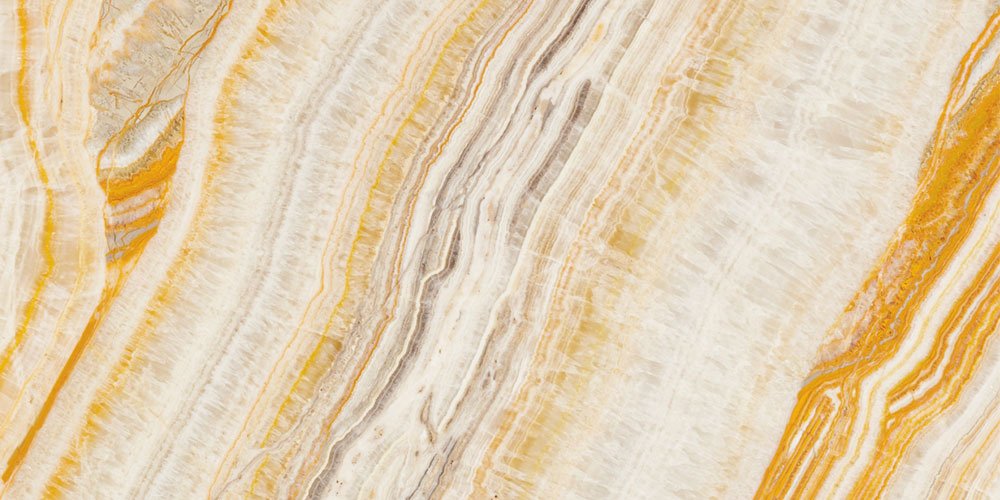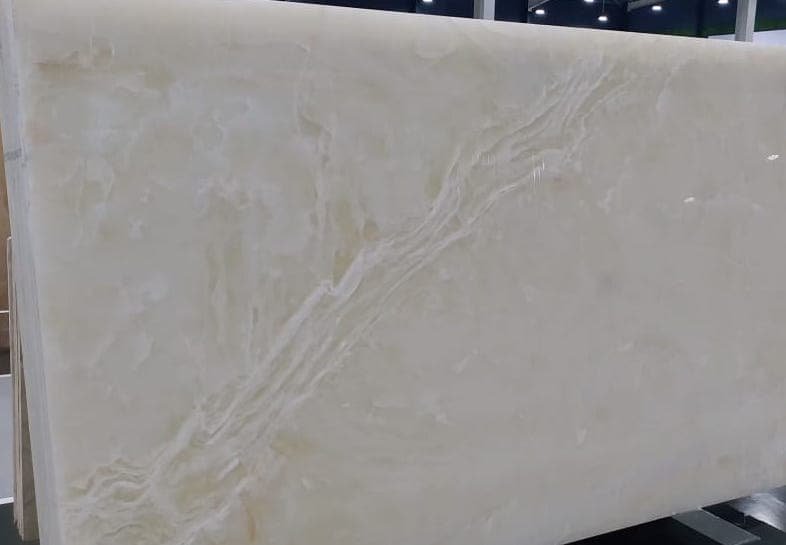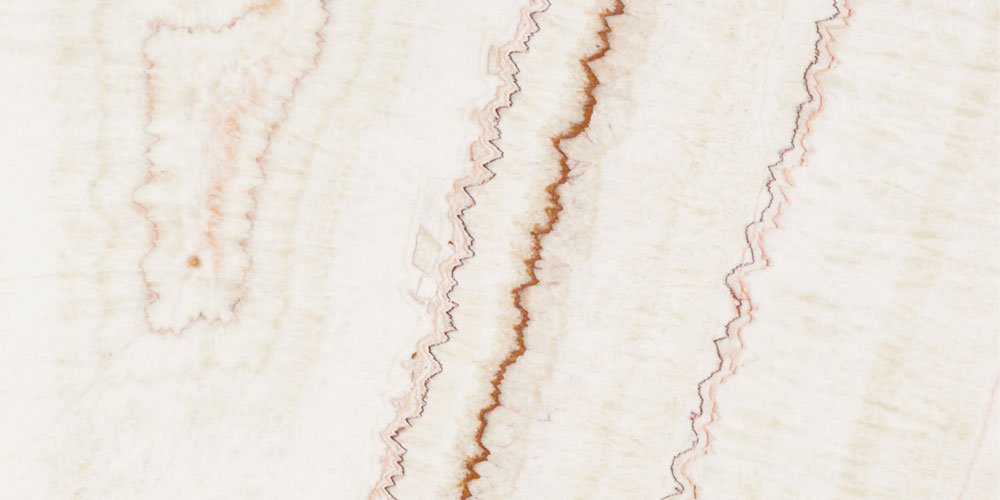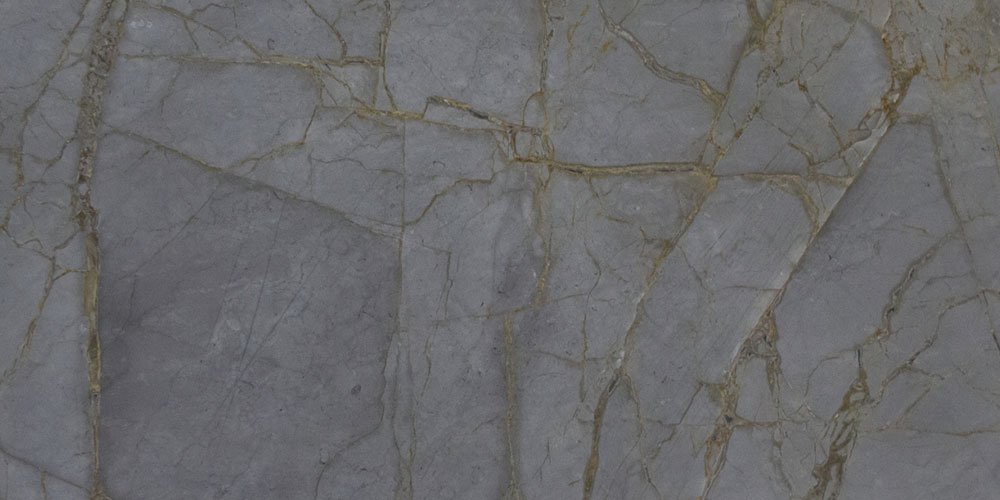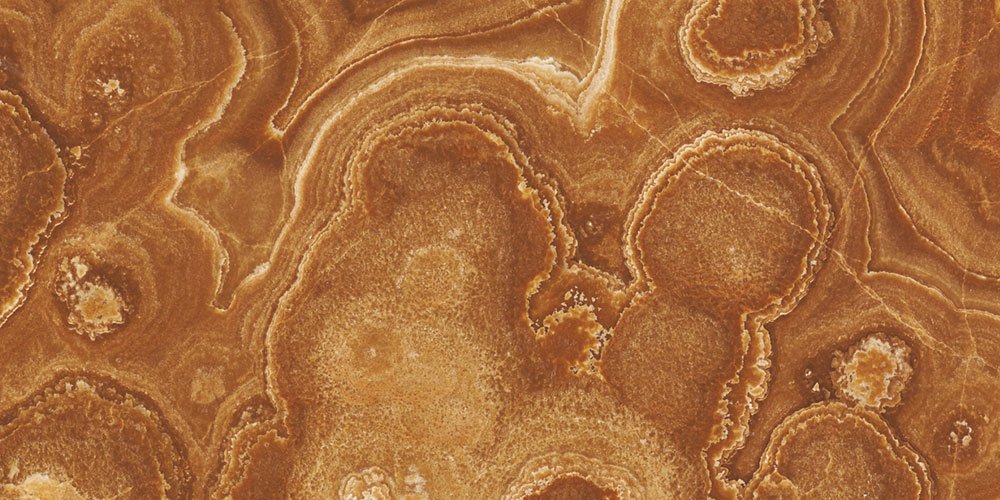onyx
Largest Collection of Imported Marbles
Onyx comes through Latin, from the Greek, meaning “claw” or “fingernail”. Onyx with flesh-colored and white bands can sometimes resemble a fingernail. The English word “nail” is cognate with the Greek word.
Onyx primarily refers to the parallel banded variety of the silicate mineral chalcedony. Agate and onyx are both varieties of layered chalcedony that differ only in the form of the bands: agate has curved bands and onyx has parallel bands. The colors of its bands range from white to almost every color. Commonly, specimens of onyx contain bands of black and/or white.[3] Onyx, as a descriptive term, has also been applied to parallel banded varieties of alabaster, marble, obsidian and opal, and misleadingly to materials with contorted banding, such as “Cave Onyx” and “Mexican Onyx”.
Onyx is a gemstone found in various regions of the world including Yemen, Uruguay, Argentina, Australia, Brazil, Canada, China, Czech Republic, Germany, India, Indonesia, Madagascar, Latin America, the UK, and various states in the US.

